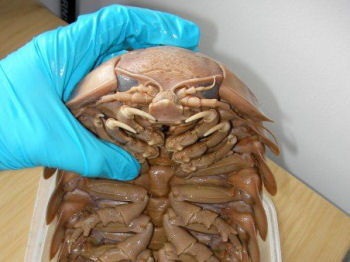Biology
Finding out what governs patterns of marine life is important because we use the oceans for food, energy, transport, and even recreation. Without an understanding of patterns of marine life, we cannot know the consequences of our actions for our planet's largest ecosystem.
Trying to understand the patterns in the world around us is also one of humanity's oldest endeavours, ever since our ancestors joined the dots in the night sky to draw constellations. Simply wanting to know how the world works is a fundamental motive behind much of science.

And just as space exploration has given us non-stick pans and pens that work upside-down, exploring the biodiversity of the deep ocean has already given us benefits for our everyday lives. These include new medical treatments, better fibre-optic technology, more efficient enzymes for industry and domestic products, and even novel cosmetic ingredients.
Page 1: Life at deep-sea vents
Page 2: Why should anyone care about patterns of life in the oceans?
Page 3: Why are we investigating the Cayman Trough in particular?
Want to dive deeper?
Read more about life at vents in Citizens of the deep
Visit Venture Ocean to find out more about vent biology
Explore the biogeography of vents in an article by Cindy Van Dover
Read more on vent ecology in a feature from the British Ecological Society Bulletin
Visit Deep Sea News for a blog post about the life-cycles of vent animals
Download a news feature about recent vent discoveries from the journal Nature
(personal or institutional subscription required)
Download a review paper about vent biogeography from the journal Science
(personal or institutional subscription required)
Science
Find out more about the Cayman Trough, undersea volcanoes, deep-sea vents,
and the inhabitants of the abyss.
What are we investigating?


